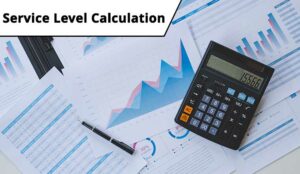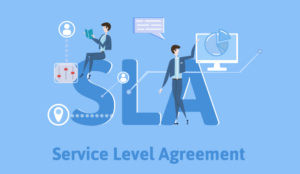Gemma Caddick questions the contact centre industry’s long-standing focus on achieving the 80/20 service level.
With my resource planning head on my shoulders, service level is a necessity to be able to set boundaries and expectations, forming part of the calculation to determine a full-time employee (FTE) requirement.
For many call centres, maintaining service level is a top priority, and for some not meeting it can result in financial penalties or even loss of contract.
There are many different variations of service level that I have come across or worked with. The most popular service level in call centres is 80/20: answering 80% of calls in 20 seconds (80/20) and is often dubbed the “industry standard“.
But what has become clear to me in the last 11 years of my resource planning journey is that no one seems to know where 80/20 came from.
Is 80/20 Reasonable for Every Contact Centre?
Most service levels are based on what the call centre can reasonably achieve, given its resources and the expected call volume – i.e. how many calls can be answered in 20 seconds with the given FTE.
80/20 tells us that there is an aim to answer 80% of customers within 20 seconds. But what it doesn’t tell us is what happens to the 20% of customers that are not answered in 20 seconds. How long are they expected to have to wait? 21 seconds? 121 seconds? 521 seconds?
80/20 tells us that there is an aim to answer 80% of customers within 20 seconds. But what it doesn’t tell us is what happens to the 20% of customers that are not answered in 20 seconds.
Gemma Caddick
I have heard horror stories where instead of customers being answered on a first come, first served basis, customers waiting longer than 20 seconds are put to the back of the queue so that customers still within service level can be answered to enable targets to be met.
With my customer head on my shoulders, stories like this make me wonder every time I am sat waiting a long time for my call to be answered whether I am part of the unlucky 20% of customers that there is no expectation set for.
How long will I be waiting? Do I need luck on my side to be part of the 80% club and have my call answered quickly? Is it first come, first served? Am I valued as a customer?
In this day and age, where high levels of customer focus forms part of the vision and values that most companies claim to stand for, is it right that we are only focusing on 80% of our customers?

Are we really putting customers at the heart of everything we do if 20% of our customers have no targeted expected wait time?
Are we really putting customers at the heart of everything we do if 20% of our customers have no targeted expected wait time? Or, even if there is a target for them, will it be longer than the other 80% of customers?
I know, I know. The greater the percentage of customers answered in 20 seconds, the greater the cost of resource to provide the service. However, for anyone who has played the game where you close your eyes and listen to a phone ringing then put your hand in the air at the point you feel you would normally hang up, 20 seconds goes really quickly. Most don’t have their hand up at the one-minute mark.
This game proves that, as customers, we are prepared to wait longer than 20 seconds for calls to be answered.
Increasing the ‘wait time’ element of the service level formula would start to offset the increase to the “percentage of customers answered” part of the formula.
Service Level Should Be Determined by the Type of Call
The type of call should determine how long a customer is prepared to wait.
Gemma Caddick
The type of call should determine how long a customer is prepared to wait.
Earlier this year, I needed to ring 999. Within one ring I was asked which service I needed. After shouting ‘fire!’ I waited and waited for my call to be answered by the fire brigade.
Truth is, I don’t know exactly how long I was waiting at this point. It felt like forever, and in my frantic and agitated state of mind, I was becoming more and more concerned with the increasing number of rings I was hearing.
The reality is that the fire brigade answered my call and had the fire engine at my house faster than it took me to get through the IVR of the insurance company the next day. But the wait time I felt less satisfied with at the time was from the fire brigade, through the unrealistic expectation I had set in my mind.
The fantastic job of the fire crew calmed my state of mind, in turn repairing my satisfaction levels with their service. With the insurance company, I wasn’t dissatisfied that I had to wait 8 minutes and 43 seconds for them to answer my call. I had time to spare. But I was dissatisfied, very dissatisfied, that my request to log a new claim couldn’t be fully completed until Monday morning as I had rung them on a Saturday.
In Summary
My point with all this is that unless we are asking customers to wait an excessive amount of time, the ‘wait time’ in the service level formula can be increased, without decreasing customer satisfaction. Customer Satisfaction, in most instances, will be determined by the way in which the call is handled.
To truly put customers at the forefront of our minds, we should be focusing on 100% of our customers. Surely it is a better message to promote success on the service we offer all of our customers than success on only 80%.

Gemma Caddick
I know as a customer I would feel more valued to be in the 100% club, even if I had to wait a little longer. Unless I have another fire. In that instance, I need to be answered before I’ve even dialled the last nine!
With the right planning and mindset we can make service level relevant again, by answering the question “how many FTE do we need to offer an exceptional service level to each and every one of our customers?”
Thanks to Gemma Caddick, a Forecast Analyst at Severn Trent Water
Find out more about contact centre service levels by reading our articles:
- What Is Causing Your Service Levels to Fail?
- How to Set Up a Service Level Agreement (SLA) for Your Contact Centre
- How to Predict Call Abandon Rates Based on Service Level
Author: Robyn Coppell
Published On: 9th Jan 2019 - Last modified: 17th Jul 2020
Read more about - Workforce Planning, Metrics, Service Level, Workforce Management (WFM)






































